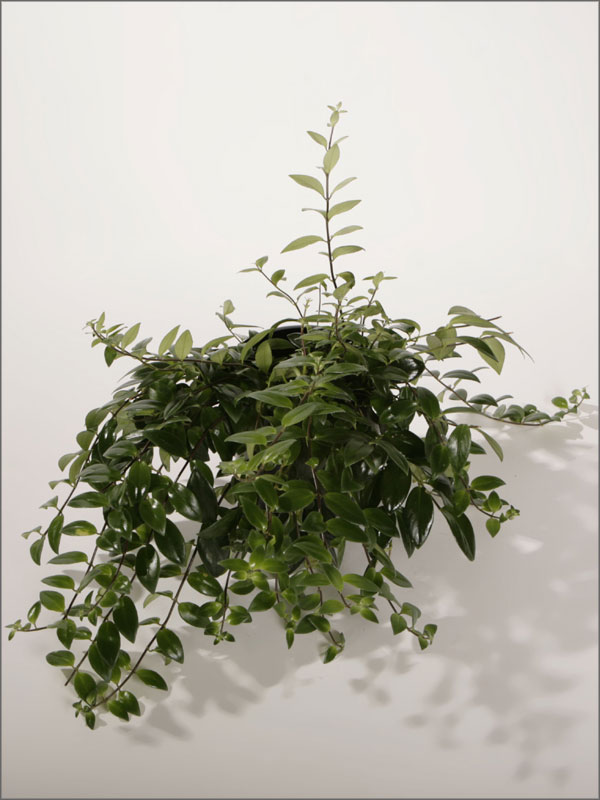Common Name: Peace lily
Light Needs
Low to medium light
Water Requirements
Water thoroughly
Description:
Decorative, well-loved, flowering bush. An industry standard.
Most commonly used varieties: Spathiphyllum wallisii and Spathiphyllum kochii
The elegant Spathiphyllum, or peace lily, can be found in almost every interiorscape, gracing table tops, displayed in floor-sized containers or shown as underplantings in large planter beds. Spaths are bushy plants with deep green, lance-shaped leaf blades on long petioles attached to underground stems called rhizomes. Peace lilies produce white or green “flowers” (modified oval leaves called spaths with a white spiky center called a spadix) year round.
Low to medium light (50fc – 250fc). Considered to be herbaceous perennials, spaths are part of the vegetative undergrowth in the tropical forest and prefer shady areas with moderate to low light. Like most plant species that grow in shady areas in the wild, spaths tolerate low light levels. Minimum light requirements are 75 fc, with 125 to 250fc being the ideal range. Direct sunlight causes leaf scorch and may turn the leaves bronze or yellow. Acclimated spaths can tolerate light levels as low as 40fc.
Spathiphyllums are fairly big drinkers. For plants in medium light, water all the way through. For those in low light, dry down the top one-third of container. These plants will tell you when they are thirsty…they droop big time. Too much water and the leaves will get black tips. Chronic overwatering will produce “freckles” on the leaves and cause roots to rot. Severe overwatering shows up as blackened leaf blades, root rot and eventual collapse of the plant. With rotted roots, the plant may droop as if it is thirsty. Too little water will cause the plant to droop. As symptoms progress, entire leaves wilt, petioles collapse and flower spathes wilt and turn brown. Mature leaves develop brown tips and the smaller, never leaves turn yellowish and die. After receiving a big drink, it will stand back up but with a few resulting yellow leaves.
If top watering your plant, water the root ball thoroughly, then allow media to dry sufficiently. In low light (40fc – 100fc), allow growing media to dry down 1/3 of the container, in medium light (100fc – 250fc), allow media to dry down 1/4 to 1/3 of the pot. Water requirements will fluctuate due to environmental conditions, seasonal change and overall health of the plant.
Check carefully to apply the correct amount of water every visit. Do not assume all plants need the same amount of water or that the same amount is required from visit to visit. Their needs change. A moisture meter can help you decide how much water to give. These plants bloom throughout the year when growing in medium light. Remove the bloom all the way down on the stem when it starts to fade. Fertilize three times per year. Add soil once per year. These plants do well in a SIP to help even out water needs.
Spaths are easily cleaned with a sponge and phosphate-free dish soap. Wipe both sides of the leaf blade, taking care not to damage the thin leaf surface. Wipe the petioles or larger varieties (where pests such as mealybug may develop), taking care not to damage newly emerging growth.
Remove yellow or torn leaves by cutting petioles close to the soil line. Remove brown petiole studs at the base of the plant (where insect pests may hide). Rather than endlessly trimming brown tips on leaves, change the conditions that caused brown tips to develop. Remove spadix from the conditions that caused brown tips to develop. Remove spadix from center of the spath to prolong flowering and to keep pollen from shedding.
Spaths are relatively pest free, but can become infested with mealybug, spider mites, scale, thrips or whitefly. Try mechanical controls such as physically wiping pests off with alcohol on a cotton swab or washing the plant with dish soap and water before turning to an interiorscape approved pesticide such as pesticidal soap, horticultural oil or a pyrethrum-based pesticide.

